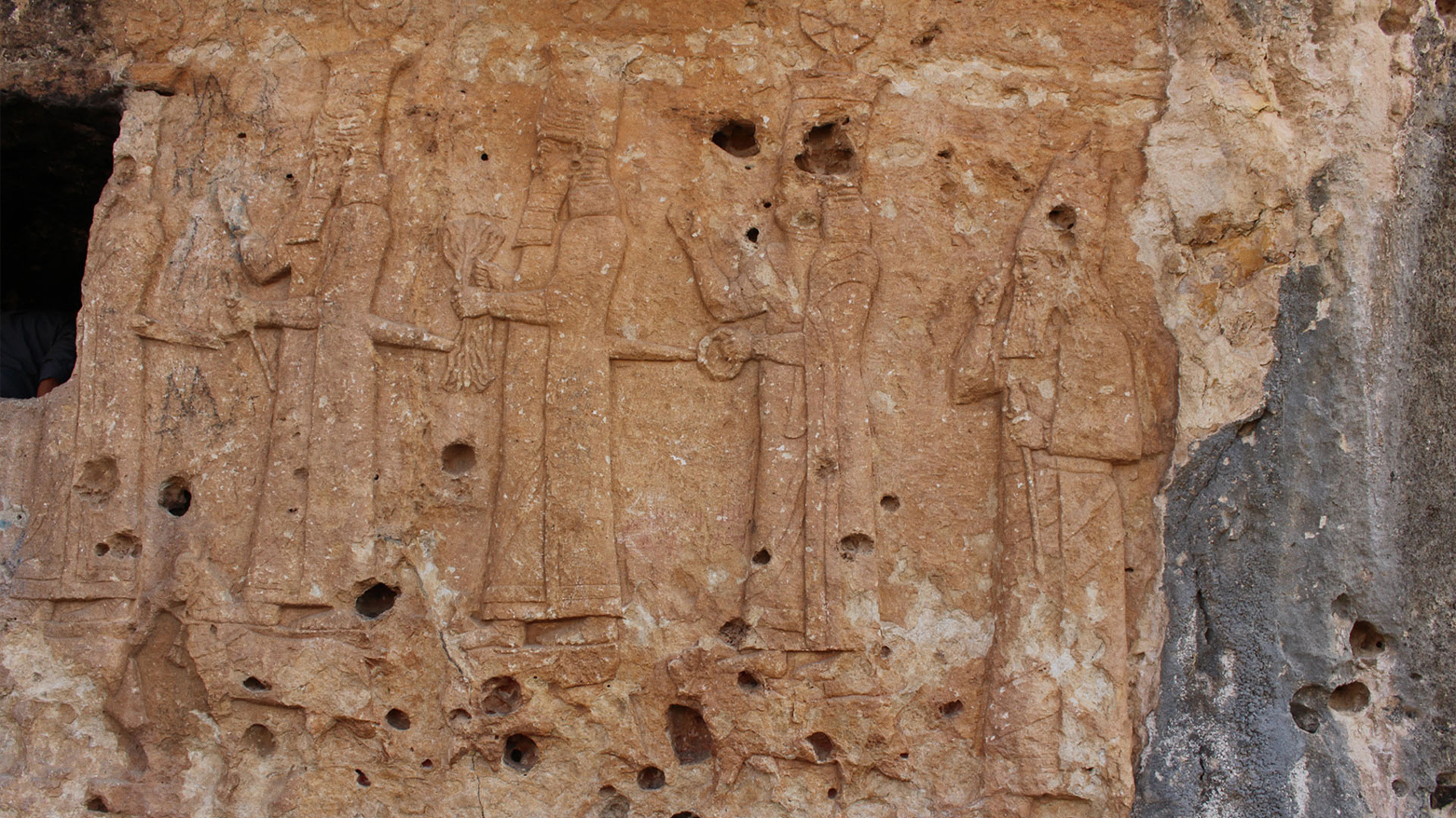Cradle of Civilizations: 6,500 Archeological Sites Place Kurdistan at the Heart of History
Every year, between 20 and 30 foreign archaeological teams arrive in the Kurdistan Region to conduct fieldwork and research. “There are always variations, but we never have fewer than 20 teams annually,” the KRG's Directorate of Antiquities and Heritage stated.

By Kamaran Aziz
ERBIL (Kurdistan24) — In a groundbreaking revelation that underscores the rich and layered history of Kurdistan, the Kurdistan Region's Directorate General of Antiquities and Heritage has announced the registration of more than 6,500 archaeological sites across the region. This milestone, made public on Sunday, demonstrates the Kurdistan Region’s growing importance as a hub of historical and archaeological significance in the Middle East.
Mohammed Lashker from the Kurdistan Region’s Directorate of Antiquities and Heritage disclosed the details in an exclusive statement to Kurdistan24. “Since 2009, we have conducted 19 archaeological surveys in the Kurdistan Region, covering approximately 55% of our territory,” Lashker said. “The remaining 45% — particularly in border zones, mountainous regions, and areas covered under Article 140 — remain unsurveyed due to political and territorial complexities.”
The registered sites do not yet include archaeological houses, which Lashker confirmed remain unrecorded, indicating that the true number of heritage locations in the Kurdistan Region is likely much higher. The Directorate emphasized that this discovery reflects years of diligent research, collaboration with international partners, and a commitment to protecting the cultural legacy of the region.
Every year, between 20 and 30 foreign archaeological teams arrive in the Kurdistan Region to conduct fieldwork and research. “There are always variations, but we never have fewer than 20 teams annually,” said Lashker. These teams are often affiliated with academic institutions and government bodies from across the globe and work under agreements with the General Directorate of Antiquities. Many have been engaged in long-term projects lasting over a decade.
“For this year alone, we have already signed three new excavation contracts,” Lashker revealed. “In addition to the 20 ongoing projects, new research initiatives will begin in several key locations.” Currently, three teams are active in Sulaimani, four in Erbil, and seven in Duhok, with four additional teams joining this year, bringing the total number to at least 18, with expectations exceeding 20.
Notably, many archaeological missions are scheduled during academic recesses in the Kurdistan Region, typically spanning two to three months, when teams take advantage of the lull in university activity to intensify excavation efforts.
Lashker also underscored the Kurdistan Regional Government’s autonomy in managing its archaeological heritage. However, the situation becomes more complex in Kurdistani territories that lie outside the KRG’s administrative control.
“We have no agreement with the federal government regarding antiquities,” he explained. “They manage the heritage sites located in areas governed by Article 140, while we are responsible for those within our jurisdiction, operating independently of federal involvement.”
In a separate statement to Kurdistan24, Kovan Ihsan, an archaeologist and researcher at the Directorate of Antiquities in Duhok Province, highlighted the city of Amedi in northern Duhok as a focal point of historical importance. “Amedi is home to 13 officially registered archaeological sites, each representing different historical epochs,” Ihsan noted.
Among the most distinguished of these sites is Sirichi Pit, known for its multi-era relics. The Amedi Gate stands out as a rare exemplar of early Christian architecture, adorned with sculptures dating back to the Persian era. The Zebar Gate, another key heritage feature, further enriches the region’s architectural and historical tapestry.
“Amedi appears in ancient records as ‘Kur a- ma- da- a- a [meaning the city of Medes],’ a name given by the Assyrian Emperor Adad-nirari II in the 9th century BC,” Ihsan stated. “This proves the city’s deep-rooted presence in Mesopotamian civilization and its continuous importance through the ages.”
The city’s historical significance is further validated by UNESCO, which included Amedi on Iraq’s Tentative List for World Heritage status in 2011. According to the submission by the Permanent Delegation of the Republic of Iraq to UNESCO, Amedi fulfills multiple heritage criteria, including cultural, architectural, and geological value. The report describes Amedi as “one of the oldest cities in the world,” with a history dating back over 3,000 years. It was once the capital of the ancient Medes and later came under Assyrian, Parthian, and Islamic influence, leaving behind a rich archaeological legacy.
UNESCO highlights Amedi’s strategic hilltop location and elliptical shape — less than 1 km² in area and surrounded by cliffs — as an exceptional example of early urban planning. The city's fortified gates, such as the eastern Zebar Gate and the western Mosul Gate, bear inscriptions and architectural motifs that reflect both Assyrian and Parthian iconography. According to the UNESCO submission, “the Amedi Gate and its engravings represent ancient beliefs and expressions,” while the city's elevated geography demonstrates “human creative genius” in adapting natural landscapes for defense and settlement.
Moreover, Amedi’s setting atop a limestone plateau shaped by geological processes over 15 million years contributes to its uniqueness. As stated by UNESCO, the city rests on the Pilaspi limestone formation of Eocene age, offering “exceptional natural landscape beauty” and a compelling case for World Heritage recognition.
As archaeological efforts continue, the Kurdistan Region is poised not only to safeguard its historical treasures but also to serve as a vital custodian of human civilization’s earliest stories. With political will, international collaboration, and scientific rigor, Kurdistan is cementing its status as a cradle of heritage waiting to be fully uncovered.
